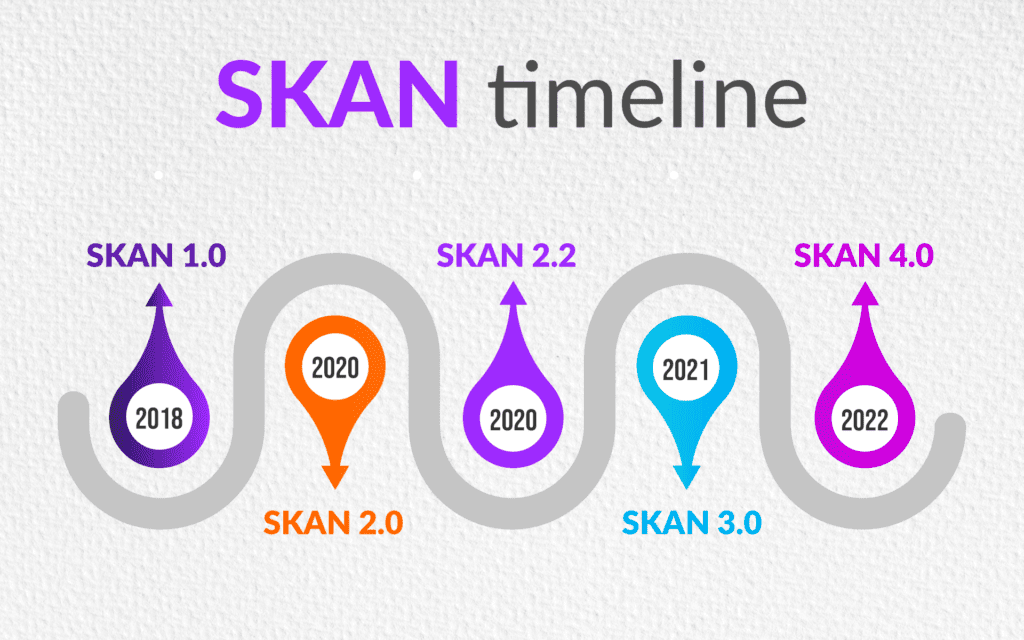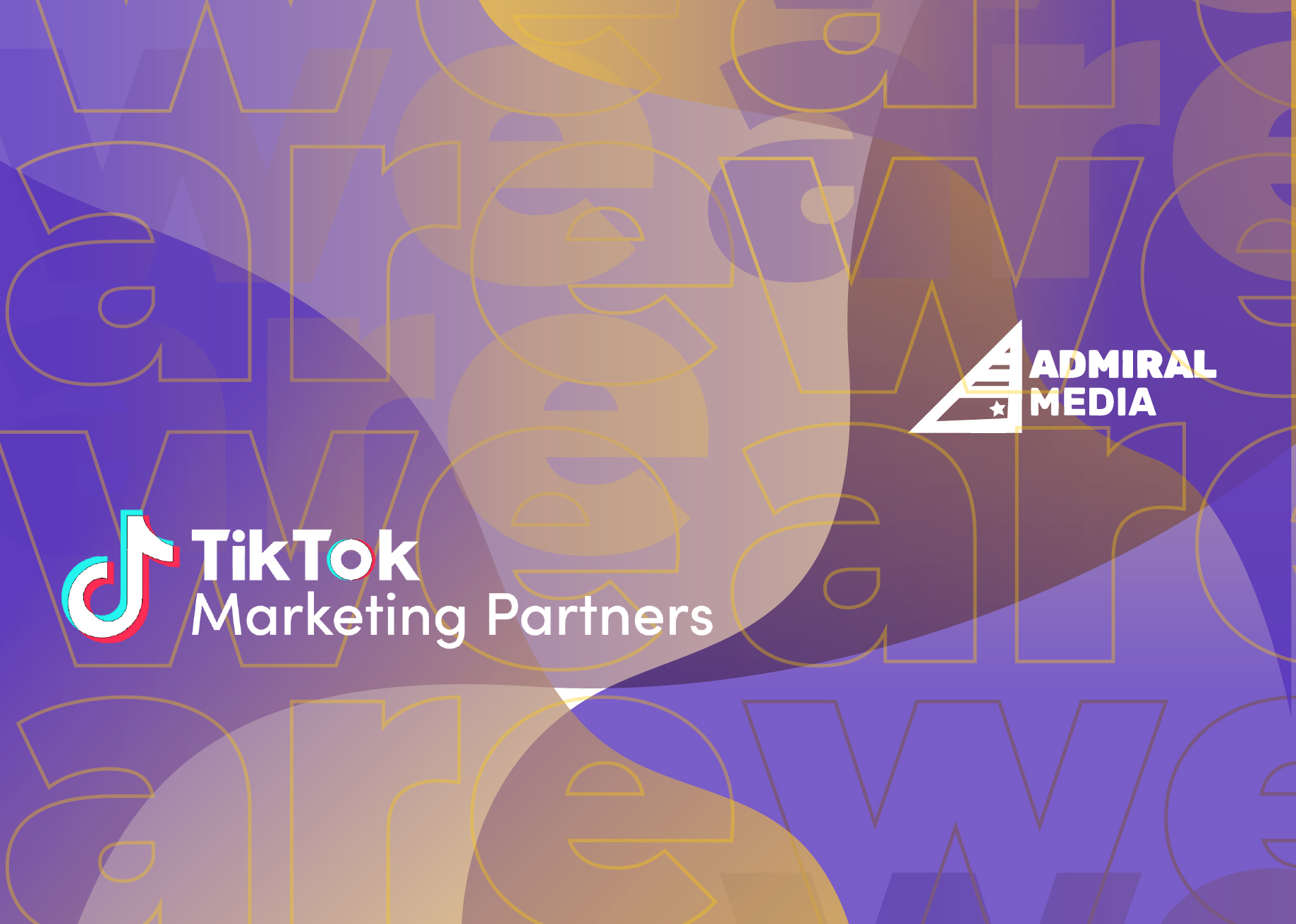Apple has built a reputation as a privacy stalwart among the big tech companies. In high-profile ad campaigns, the company tells consumers, “what happens on your iPhone, stays on your iPhone,” and uses slogans like “Privacy. That’s iPhone.” With the launch of iOS14, Apple enhanced privacy and security features to help users protect their data and decide who they want to share it with. This created a big challenge for advertisers and was quickly followed by the launch of a new version of SKAdNetwork, or SKAN. SKAN promised to give advertisers the data they needed without sacrificing user privacy. After iOS 14.5 it became the main attribution framework for users who opted out of sharing an advertising ID (IDFA). This was also when Apple stepped up its drive to capture advertising market share from Google Ads and Facebook Ads. With SKAN in its fourth generation, the framework has undergone major updates. As a result, it’s now more useful and accessible for advertisers looking to measure their mobile marketing campaigns. This article will reveal what’s changed with SKAN 4.0 and why you should care. We’ll investigate whether this is a significant turning point in mobile advertising.
Table of Contents
What is SKAN?
SKAdNetwork (SKAN) is an attribution framework developed by Apple. It was introduced in 2018 to protect user privacy while still allowing advertisers to measure the effectiveness of their ad campaigns. The framework provides a way for advertisers to receive aggregated data about the performance of their campaigns without collecting any personally identifiable information (PII) from users. Since its release, SKAN has seen several iterations: 
SKAN 1.0
This initial version of SKAN was released in 2018. It provided a limited set of attribution data to advertisers, such as the app installation source, campaign ID, and conversion value. However, it did not provide granular data such as ad creative, ad network, or campaign targeting.
SKAN 2.0
SKAN 2.0 was released in 2020, bringing several new features to the framework. This introduced a new field called “redownload” in the attribution payload, indicating whether the user had previously downloaded the app.
SKAN 2.2
SKAN 2.2 was an update to the framework that introduced support for view-through attribution, the ability to count ad impressions, and conversion value. It also expanded the scope of attribution beyond just app-to-app.
SKAN 3.0
SKAN 3.0 was released in 2021 and was a significant update to the framework. It introduced several new fields in the attribution payload, such as the ad network ID, ad group ID, and creative ID. It also supported campaign-level optimization and multiple conversion values, allowing advertisers to track different in-app events.
SKAN 4.0
It is the latest edition. It comes with some significant changes that we will discuss later in the article.
The problems with past versions of SKAN
Past versions had limitations and drawbacks that posed challenges for advertisers and app developers.
Limited Attribution Windows
In previous versions of SKAN, advertisers could only attribute installs to ad campaigns that led to an install within 24 hours. This was a significant limitation for ad campaigns with longer conversion paths or requiring additional user engagement before installing the app.
Limited Campaign Attribution
Previously, advertisers could only track installs resulting from a single ad campaign per app. This made tracking the performance of multiple ad campaigns running simultaneously or across different apps difficult.
Incomplete Conversion Data
Past versions of SKAN did not provide complete conversion data. As a result, advertisers could not access information about the user’s engagement with the app post-install. This limited their ability to optimize their campaigns and understand the lifetime value of the users acquired through ad campaigns. Apple has addressed many of these limitations with the latest version of SKAdNetwork.
What does SKAN 4 change?
There are three main areas where SKAN 4.0 has improved. These changes could make the framework more appealing to advertisers and shake up the industry.
Campaign Measurement
- SKAN 4.0 helps marketers get a much better understanding of which ad campaigns are delivering high-value users to their apps.
- SKAN 3.0 identified campaigns with a Campaign ID number between 0 and 99. In the latest iteration, a ‘Source ID’ function assigns a four-digit number to each campaign. Instead of being limited to 100 campaign IDs, advertisers can now access up to 10,000 different ID combinations. Leading to better granularity in campaign dimension reporting, for example using more granular campaign IDs to include location, ad placement, creative, or other info.
Conversion Values
SKAN 4.0 provides more tools to help advertisers understand the value of individual users. There are more options to measure in-app engagement. Marketers can assign conversion values to get more granular insights into the value of each user.
Web Support
The lack of web-app support was a drawback of previous versions of the SKAN framework. In SKAN 4.0, advertisers can see how web browser behavior connects with app downloads and in-app behavior. It makes it much easier for marketers to conduct cross-channel attribution.
What does SKAN 4 mean for advertisers?
SKAdNetwork 4.0 will benefit advertisers in several ways.
- First, it introduces support for view-through attribution, which allows advertisers to measure the effectiveness of their ads even if the user doesn’t click on the ad but still installs the app within 24 hours. This can provide a more accurate picture of the impact of their advertising efforts.
- Second, SKAdNetwork 4.0 provides a standardized framework for attribution that can help reduce fraud and increase transparency in the mobile advertising ecosystem. This can ultimately lead to better outcomes for advertisers, as they can have more confidence in the accuracy of their attribution data and save money lost for fraudulent publishers.
Overall, SKAdNetwork 4.0 can provide advertisers with a more accurate, transparent, and privacy-friendly way to measure the effectiveness of their mobile advertising efforts. This shows that Apple is looking to develop SKAN into a major player in advertising infrastructure. It’s making changes that empower advertisers with more insights and data to guide decision-making. The outcome should be better for all parties involved. Consumers benefit from more relevant advertising without sacrificing data privacy, and advertisers can reach the right audiences to improve return on ad spend (ROAS). The adoption of SKAN 4.0 within the industry is likely to be a gradual process, given that it requires buy-in from all stakeholders involved in the ecosystem, such as app developers, MMPs, ad networks, publishers, and end users.
How to get SKAN 4.0 to work for your app
At Admiral, we are already working on SKAN 4.0 setups for some of our biggest clients. Implementing SKAN 4.0 requires careful planning and attention to detail. It’s essential to ensure that your app’s marketing setup is compatible with the new framework and that you’re collecting the correct data to accurately track user activity. If you have any questions about SKAN 4.0, please don’t hesitate to contact our SKAN expert Pablo Perez, Performance Marketing Director at Admiral Media, to help you get started.






